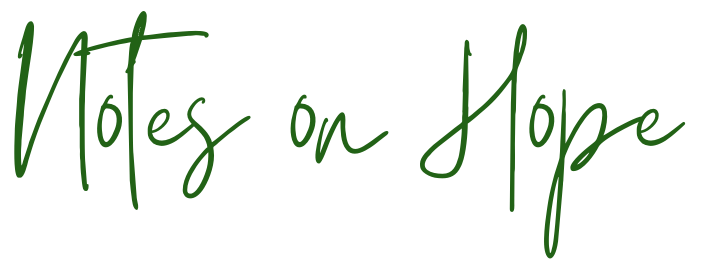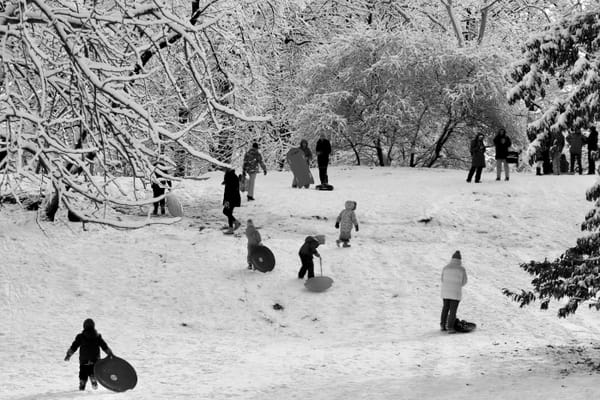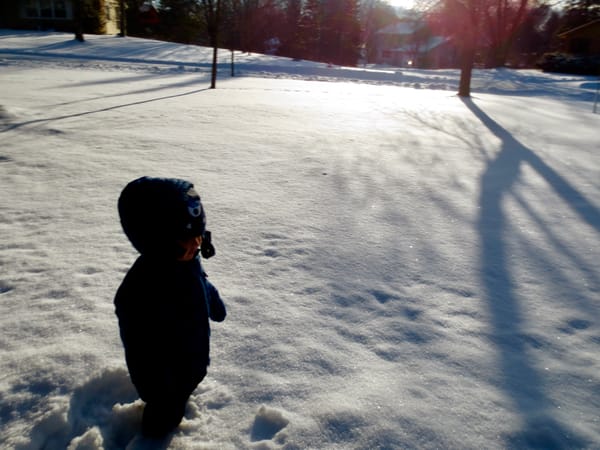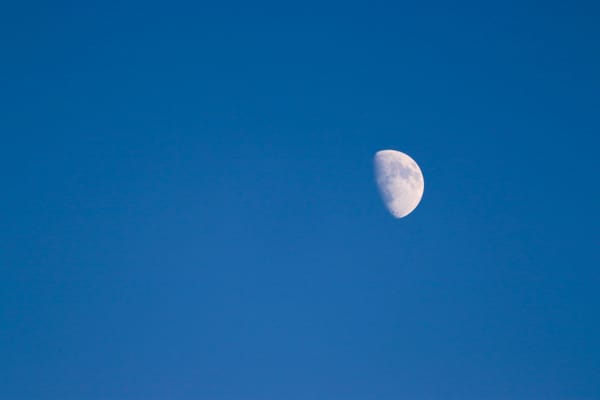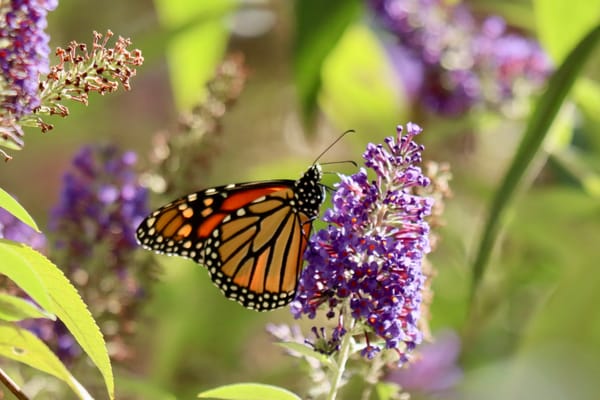Why Hope Can Feel Risky
And why we have to embrace it anyway
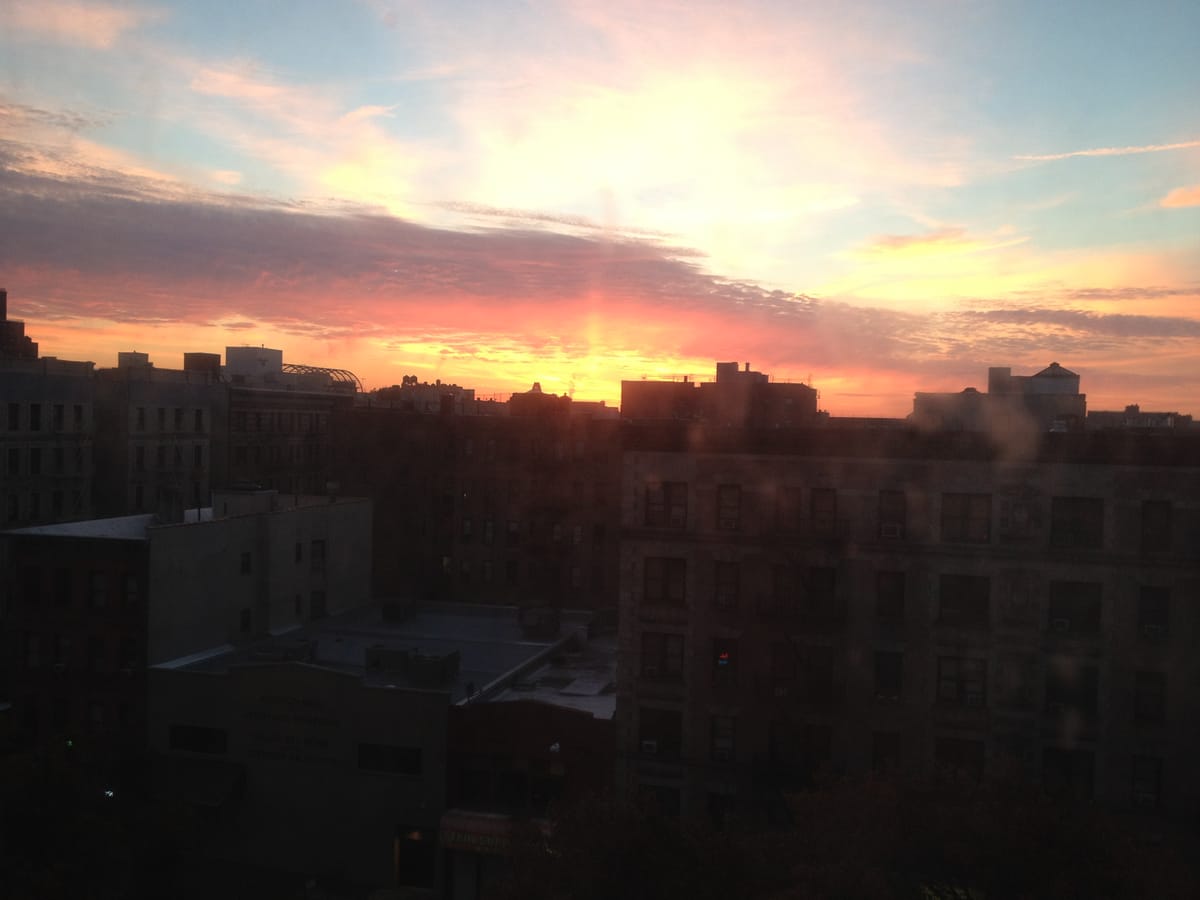
“Defenseless under the night
Our world in stupor lies;
Yet, dotted everywhere,
Ironic points of light
Flash out wherever the Just
Exchange their messages:
May I, composed like them
Of Eros and of dust,
Beleaguered by the same
Negation and despair,
Show an affirming flame.”
~W.H. Auden
Recently, a flustered pigeon crashed into a window one or two stories above our apartment and fell to the ground. He seemed alert if confused at first, lying on the cement and nudging an injured wing with his beak. I grabbed a paper bag and called out to my son that we needed to take a pigeon to the Wild Bird Fund—a small but mighty local wildlife rescue that models more heart in an average day than most of us likely muster in a year.
As I lifted the bird into the bag, he had already laid his head down against his fractured wing, still alive but barely. We took him anyway. Pigeons are not exactly beloved birds. They’re the definition of ordinary, and they are often seen as a nuisance, particularly in cities where they are so ubiquitously underfoot. But witnessing suffering has a way of reminding us that we are all both ordinary and vulnerable, and in our vulnerability we are deserving of care and dignity.
By the time we made it the few blocks to the sanctuary, he had indeed died. But as we were leaving, the rescuer who had taken him from us returned to say, “By the way, even though he didn’t make it, you did the right thing. If it happens again, do the same.” A simple reminder not to be defeated by loss, which I’m sure she must issue many times each week.
For those who routinely hold the fragility of life in their hands, no matter how small or seemingly common, hope is not ephemeral, it is a clear-eyed and pragmatic necessity.
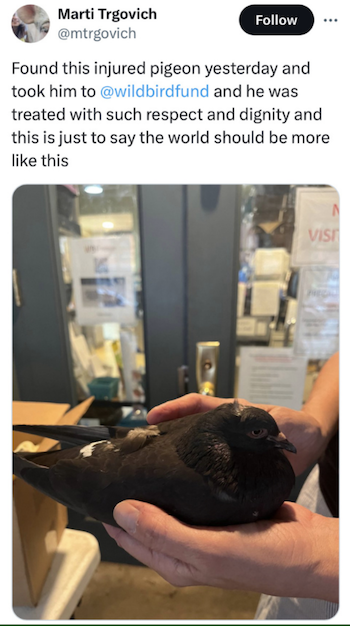
As the political winds have shifted rapidly and dramatically this week, I’ve heard a lot of musings on hope, some from people who have noted that they are finally feeling hopeful in what had increasingly felt like a climate of despair and resignation. I’ve heard this from friends, and it has been powerfully demonstrated as coalition after coalition has assembled in unprecedented numbers to rally and raise funds, ignited by the potential of an historic candidate, who seems to radiate hope. Others have noted that, while they want to feel hopeful, they’ve become too wary to embrace hope, too bruised by the vitriol and division that have become so forceful and dominant in our daily lives and especially in our political lives, and too skeptical of our ability to really rise above it all.
There have been so many moments of hope deferred and so many opportunities to see the darkest aspects of human nature on display. It’s easy to feel we must distance ourselves from hope when so much of what surrounds us seems to create a constant drumbeat of cruelty. Even as hope surged this week in many corners with the sudden possibility that a Black woman might become president, the news was weighed down by tragedy, as video of the devastatingly avoidable death of another Black woman, Sonya Massey, was released, reminding us that progress is always hard won and desperately uneven.
When we experience cruelty winning the day, whether on an intimate scale or a collective one, hope can feel risky. We’re compelled to protect our tender hearts when heartbreak is so pervasive.
But I think the answer has to lie in looking more deeply at what it means to hold hope, not in becoming wary of it. And to do that, we need a definition of hope that is robust enough to encompass complexity and struggle, as well as the promise of progress and healing.
Hope is most powerful when it acknowledges darkness and reckons with it. It is different, I think, from optimism, which is more delicate. Optimism rests on perceiving the positive in the present moment and relying on that as our starting point for looking to the future. There is a place for this outlook. We need to be able to identify pinpricks of light in order to hold onto the possibility of something brighter. But optimism alone feels insufficient in the face of the darkest chapters in our history and in the face of the precariousness of the present.
Hope, on the other hand, has more nuanced origins. Across its iterations in Old English, Greek, and Hebrew, hope is associated with expectation, trust, and faith. It doesn’t rely on recognizing the positive in our difficult present but in committing to something ahead. In Hebrew, the word for hope not only means expectation but also refers, literally, to a woven cord or rope meant for binding. It originates in a verb that means both to bind together and to wait. Hope in these terms is not fragile or superficial. It alludes to the task of holding fast to something and of remembering that we are always tethered to the future. And, with its root in a verb, it asks something active of us.
I don’t think it’s a coincidence that this sturdier, more nuanced understanding of hope can be found in Hebrew. If we want to root ourselves in an understanding of hope that doesn’t simply ask us to paint silver linings, but teaches us to move forward through difficulty and loss, then surely it is best found in communities that have endured and persisted across difficult histories.
Hannah Arendt struggled to parse these notions of hope and optimism in responding to deeply troubling realities. She said, “the events of our time are not less effectively forgotten by those committed to a belief in an unavoidable doom, than by those who have given themselves up to reckless optimism.” She referred to this “reckless optimism” also as a “desperate hope,” which she saw as no more an antidote than “desperate fear.” And yet, she also argued for a stance of active engagement with the world and with one another in the work of taking responsibility for and repairing the world—a stance that necessitates, not “desperate hope,” but a more honest and pragmatic hope, a hope that requires a realistic assessment of the world as it is and an acknowledgement of the uncertainty and fragility of the world as it might be.
The poet Elizabeth Alexander, speaking shortly after the 2016 election, also looked to a version of hope that can be found, not in optimism alone, but in the wisdom that emerges from the depths of oppression. She explained that as a child, when she would face challenges, her father would remind her that, “Harriet Tubman figured something out.” She laughed as she remembered this, noting that this was not always the most welcome or helpful advice to receive as a small child! But she went on to describe the larger power inherent in this reminder. She said,
“Harriet Tubman figured something out…That is actually a real challenge to our resources — to say, what does it mean, what can we learn from the resilience of people who were never at the center of power, who never expected to be given power, but who nonetheless found their way to make this amazing country…There are things we don’t yet know, that we don’t think we’re going to see, that are also going to give us power and beauty, if we hold up our own.”
This is the understanding of hope that I think we need to commit to today. It is not one of quick or easy progress. It is a version of hope that recognizes that belief in a better future becomes much too fragile when we attach it solely to immediate victories. We have to continue to work to make progress, while knowing that when we bind our hope to the present alone, it becomes too easily undercut and we inevitably find ourselves feeling defeated and betrayed by hope. Hope is meant to bind us to the future, and it doesn’t promise a smooth path. Progress happens in fits and starts, regressions and regained ground, over generations, “uncertain and flickering,” in Arednt’s words. In plain terms, it asks if Harriet Tubman persisted under the circumstances she faced, who are we to give in to despair?
This kind of hope is powerful, but it acknowledges that there will be loss along the way, and the future, even when we hold onto hope, is not guaranteed. With each loss it becomes more tempting to protect ourselves from the next one, so we shut hope down and close ourselves off to the “things we don’t yet know, that we don’t think we’re going to see.” But in doing so, in protecting ourselves from defeat in the short term, we resign ourselves to defeat in the long term, because without hope it is too easy to become inactive. The future, as Arendt reminds us, is inherently uncertain, so it is our responsibility to constantly work to shape it.
Hope may be rooted in the notion of waiting, but it isn’t a passive form of waiting. We have to hold tight to the cord, understanding that what we are pulling ourselves toward may come tomorrow or it may be distant, but either way we are obliged to keep pulling.
“The arc of the moral universe is long, but it bends toward justice.” This is one of Dr. Martin Luther King Jr.’s most often quoted lines, and it is usually cited in moments when the progress toward justice feels tangible, as if it’s an assertion that we’ve finally arrived at the end of the arc. But we easily lose sight of the first part of that line, “the arc is long.” The work that moves us toward justice is a commitment to hold hope actively and with fortitude, not only in the moments where we can feel progress happening, but also in the ones where it is least certain or where we are thrust forcefully back.
Dr. King said these words in the context of a fervent admonishment that we not be passive or mistake the present moment for the finish line. In the same speech where he spoke of the moral arc, he said,
“There are all too many people who, in some great period of social change, fail to achieve the new mental outlooks that the new situation demands. There is nothing more tragic than to sleep through a revolution…Somewhere we must come to see that human progress never rolls in on wheels of inevitability. It comes through the tireless efforts and the persistent work of dedicated individuals. Without this hard work, time becomes an ally of the primitive forces of social stagnation. So we must help time and realize that the time is always right to do right…Never allow it to be said that you are silent onlookers, detached spectators, but that you are involved participants in the struggle to make justice a reality.”
Hope, in this context, is a commitment to struggle against our own passivity, to adjust our outlooks to the demands of the moment, to hold onto the cord and keep pulling ourselves forward. Hope isn’t meant to be a balm. It is the necessary fuel that prevents us from acquiescing to sleep in order to protect our hearts from the turbulence of a fraught journey. It propels us forward while also providing the patience that prevents us from turning back at every setback.
Paulo Freire, another voice speaking of hope in the face of oppression said,
“The dehumanization resulting from an unjust order is not a cause for despair but for hope, leading to the incessant pursuit of the humanity denied by injustice. Hope, however, does not consist in crossing one's arms and waiting. As long as I fight, I am moved by hope; and if I fight with hope, then I can wait.”
When holding onto hope feels frightening and vulnerable, this is when it is most important to remind ourselves that the arc is long. Having the fortitude to remain in active engagement with hope and the work of creating a better future relies on our ability to both be fully active in the present and to wait, where waiting means to be undeterred. To wait, when we must, but not to sleep—to move through obstacles and heartbreak and to keep looking forward.
The need for us to ground ourselves in a tenacious form of hope in periods of significant change and upheaval is especially critical if we are to avoid “sleeping through the revolution,” as Dr. King warned. However, it is difficult to suddenly summon the strength to do this when we are in the midst of turbulence, if we haven’t built the muscles of sustaining hope over time, and too many of us haven’t.
But we can start. We do this through the many small moments of life that ask us to hold loss, repair our broken hearts, and move forward with hope again. And this is also how we model hope for our children and help them build the muscles for their own journeys.
This is why I began with an ordinary pigeon. (Stay with me!) What could one very common bird have to do with hope and justice, despair and fortitude writ large? This was a small moment in my life and my son’s. But the most important reminders for how we navigate significant challenges are often found in these intimate and unexpected places where we practice the skills that we need to sustain us when hope feels more out of reach.
It is the same skills that are required in these brief, intimate encounters that we need to draw upon as we work toward large, collective progress—recognizing suffering wherever we see it, responding even when the outcome is tenuous, resisting discouragement, and committing to respond again the next time no matter the outcome. As parents, these small moments are especially important, because they are where we most concretely and consistently show our children that we are obligated to respond to suffering everywhere, even when loss is likely, and that we can keep moving forward and responding again and again. And the things that feel small and insignificant to us often feel quite big to children. Just watch a child follow an ant down the sidewalk and you’ll see how much small things matter to children. Look for these moments of active hope, no matter how small or ordinary, and don’t pass them by. They are the calisthenics for the larger work. With each small act, the big ones seem less daunting.
“It is a subtle art, though, preparing one's heart for loss without armouring it. I find that there’s a surprising amount of relief in surrender, in putting my hand over my heart and whispering, ‘This is really going to hurt’. The depth of grief will always match the depth of love, because they are one and the same.”
This is true, I think, in our relationship to individuals and to the world more broadly, for the work of repairing the world, of making it more just and safe and equitable, more full of joy and tenderness, is the work of love. And it is work that is fueled by a spirit of hope that acknowledges fragility and loss but is not daunted, because it also acknowledges possibility. In the words of Elie Wiesel, who saw the darkest side of humanity and, nonetheless, spent a lifetime committed to our capacity to find meaning and build a better world, “If dreams reflect the past, hope summons the future.”
Let’s be brave, lift our heads from past defeats, and summon the future together.
Wishing you courage and fortitude,
Alicia
If you think someone else in your life might enjoy reading Notes on Hope, please share. It’s always easier to hold onto hope when we are not doing it alone.
